No products in the cart.
Return To Shop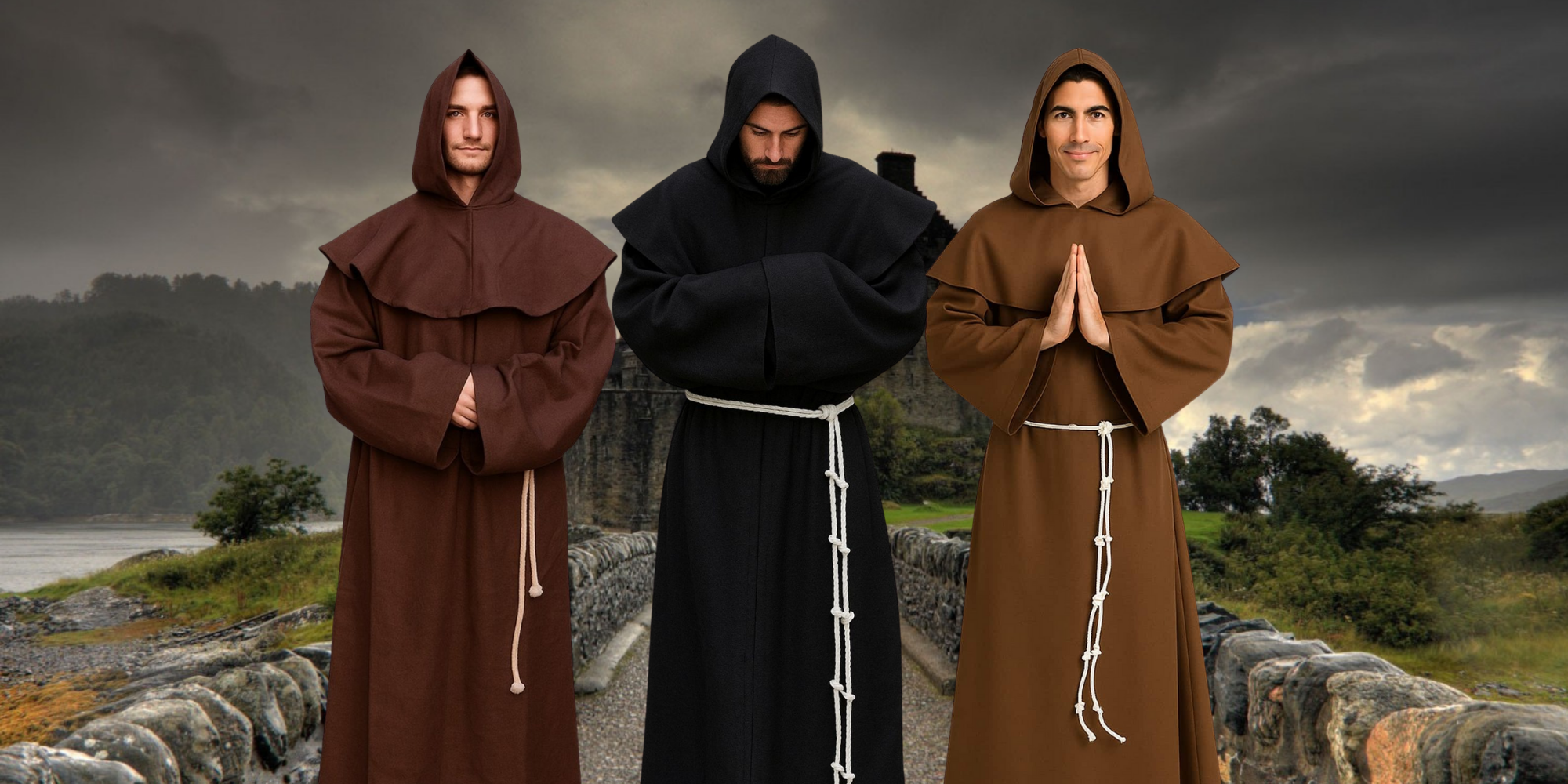
A Complete Guide to Monastic Life
How to Become a Catholic Monk:
For centuries, monks have embraced lives of prayer, humility, and devotion. Becoming a Catholic monk is not just a decision it is a sacred vocation. From wearing the Benedictine monk habit to living in silence within monastery walls, the journey is one of discipline, service, and surrender to God.
If you’ve ever been inspired by Franciscan monks in their humble brown monk robe, admired the discipline of Benedictine monks, or wondered about the meaning of monks clothing, this guide will walk you through everything you need to know.
What Does It Mean to Be a Catholic Monk?
A Catholic monk is a man who chooses to live in a monastery, under vows of poverty, chastity, and obedience. Unlike parish priests, monks spend their lives in prayer, work, and study. Their outward monk robes or monastic habit reflect their inner vow: simplicity, humility, and devotion to God.
The image of a monk in robes, walking in silence with a monk hood clothing, continues to inspire the faithful as a living reminder of timeless spirituality.
Catholic Monastic Orders and Their Traditions
Before becoming a monk, it’s important to understand the different orders in Catholicism. Each order has unique practices, history, and monk attire.
Benedictine Monks
- Follow the Rule of St. Benedict (Ora et Labora – Pray and Work).
- Wear the Benedictine habit, often black with a hood.
- Focus on balance between prayer, work, and study.
Franciscan Monks
- Founded by St. Francis of Assisi, living in poverty and simplicity.
- Wear the Franciscan habit—a simple brown monk robe tied with a cord.
- Serve the poor and marginalized.
Conventual Franciscans
- A branch of the Franciscans.
- Their friar costume is usually gray or black.
- More engaged in missionary and teaching work.
Cistercians & Trappists
- Reform branches of the Benedictines.
- Wear a white religious habit with a black scapular.
- Emphasize silence, simplicity, and strict discipline.
The Role of Monk Clothing in Monastic Life
Monk clothing is not just functional—it is deeply symbolic:
- Monk robes / Monks robes → Represent humility and renunciation of worldly luxury.
- Monks hood clothing → Symbolizes anonymity and humility before God.
- Franciscan habit / Brown monk robe → Expresses poverty and humility.
- Benedictine monk habit → Signifies stability and prayerful dedication.
- Religious habit → A general term for the sacred garments of monks and nuns.
Whether it’s a Benedictine habit, Franciscan habit, or monk wear of another order, the attire reminds both the monk and the world of his spiritual vows.
Steps to Becoming a Catholic Monk
- Discern Your Calling: Spend time in prayer and reflection. Speak with a spiritual director to confirm that God is calling you to monastic life.
- Choose an Order: Decide whether you’re drawn to the Benedictine monks, Franciscan monks, or another Catholic tradition. Your choice will influence your lifestyle and monk outfit.
- Visit Monasteries: Attend retreats and meet communities. Seeing monks in their monks clothing and experiencing their rhythm of prayer will give you clarity.
- Postulancy (Trial Period): Live in the monastery as a candidate. This is a time to test your vocation before receiving the monastic habit.
- Novitiate Stage: You officially become a novice and are given your monks robes (e.g., Franciscan habit or Benedictine habit). This stage lasts 1–2 years.
- Temporary Vows: Take vows of poverty, chastity, and obedience for a limited period while continuing formation.
- Solemn Vows (Final Profession): You commit your life to God and your community. From this day forward, your monk attire becomes your permanent symbol of devotion.
Daily Life of a Catholic Monk
The daily schedule varies by monastery but usually includes:
- Prayer & Liturgy (Divine Office prayed multiple times a day).
- Study (Scripture, theology, spiritual texts).
- Manual Work (farming, teaching, writing, community service).
- Silence & Reflection (a core part of monastic growth).
The rhythm of daily life, reinforced by wearing the monks habit, keeps a monk grounded in his vows.
Catholic Monk Habits vs. Buddhist Monk Robes
While Catholic monks wear habits such as the Benedictine habit or Franciscan habit, Buddhist monks wear Buddhist monk robes (saffron, maroon, or gray depending on tradition). Both traditions use monks robes as a visible sign of detachment from worldly desires and dedication to a higher spiritual calling.
FAQs About Becoming a Catholic Monk
Can anyone become a Catholic monk?
Not everyone is immediately eligible to become a Catholic monk. Candidates must usually be baptized and practicing Catholics, unmarried, and free of major debts or family obligations. Most monasteries also require good physical and mental health, as monastic life can be disciplined and demanding. Beyond these requirements, the most important element is a genuine spiritual calling to live a life of prayer, obedience, and service to God.
Do monks wear monk clothing all the time?
Yes. Monks generally wear their monastic habit (such as the Franciscan habit or Benedictine habit) every day as a visible sign of their vows. The habit is not only practical clothing but also a spiritual symbol of humility and devotion. However, some monasteries allow lighter work attire for manual labor or outdoor tasks, though it still reflects simplicity and modesty in line with the community’s rules.
What’s the difference between a monk and a friar?
While both monks and friars dedicate their lives to God, their lifestyles differ. Monks live in monasteries, focusing on prayer, contemplation, and stability within their community. Their life is more enclosed and centered on silence, worship, and study. Friars, such as the Conventual Franciscans, are more active in the world. They travel, preach, teach, and serve directly in society while still wearing their friar costume or Franciscan habit
Do monks only pray?
No. While prayer is central to monastic life, monks balance it with daily work, study, and service. Following the principle of Ora et Labora (“Pray and Work”), monks may engage in farming, teaching, writing, or community service, depending on the order. This rhythm of prayer and labor ensures a well-rounded spiritual life while also contributing to the needs of their community.
Can I visit a monastery before joining?
Yes. Most monasteries welcome visitors, retreatants, and those discerning a vocation. Spending time in a monastery allows you to experience the daily rhythm of prayer, silence, and community life. These visits are often the best way to discern whether you feel truly called to the monastic path and to speak directly with monks who can guide you in your journey.
Inspiring Words from the Saints
- “Listen carefully, my son, to the master’s instructions, and attend to them with the ear of your heart.” – St. Benedict
- “Start by doing what’s necessary; then do what’s possible; and suddenly you are doing the impossible.” – St. Francis of Assisi
Conclusion
Becoming a Catholic monk is a profound journey of devotion and service. From the Benedictine monk habit to the Franciscan habit, from daily prayer to silent reflection, every step reflects a deeper call to God. If you are inspired by the sight of a monk in robes, the simplicity of monks clothing, or the strength of the religious habit, perhaps this path is meant for you.



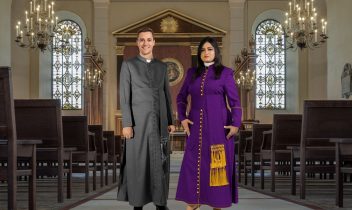
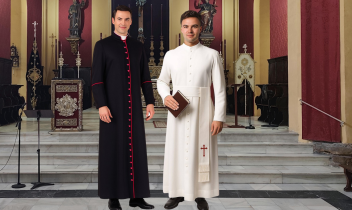
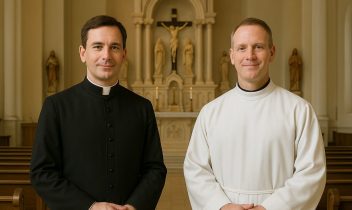
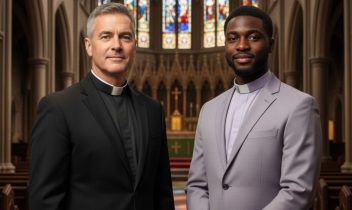
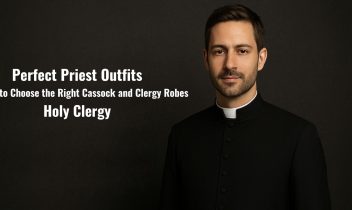
Recent Comments